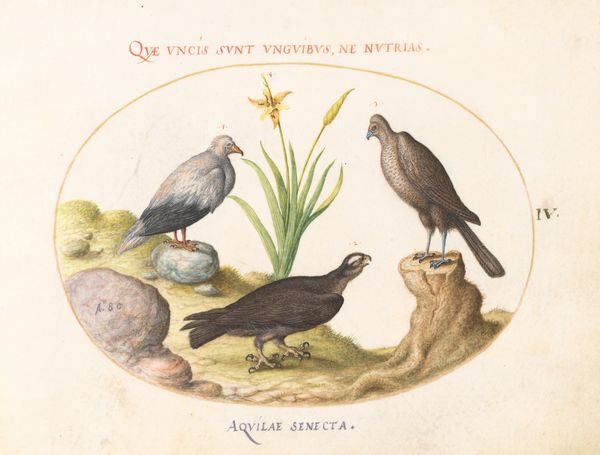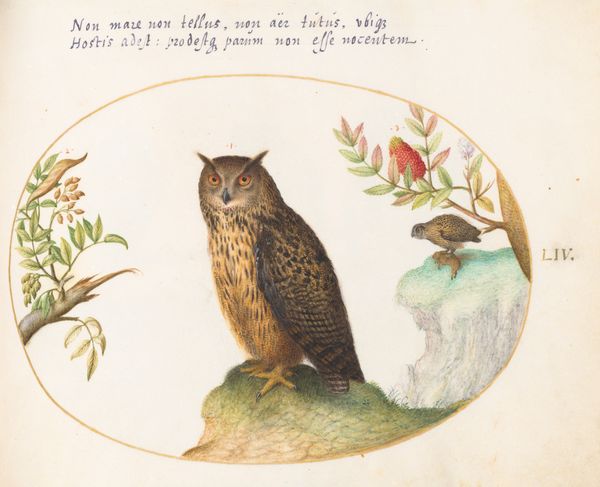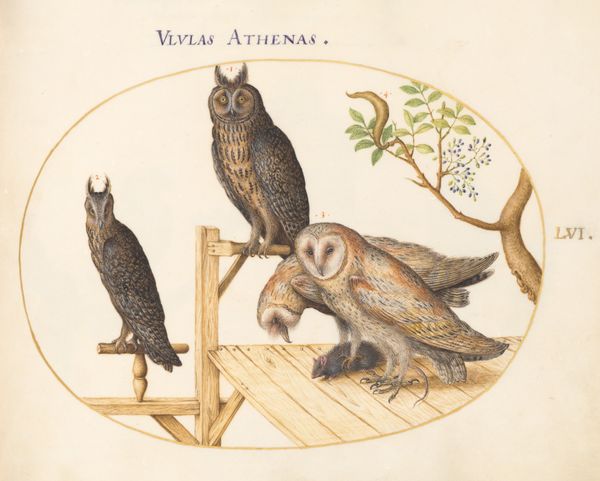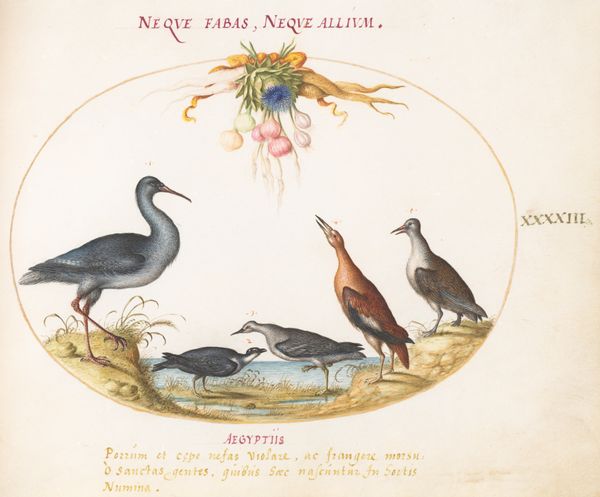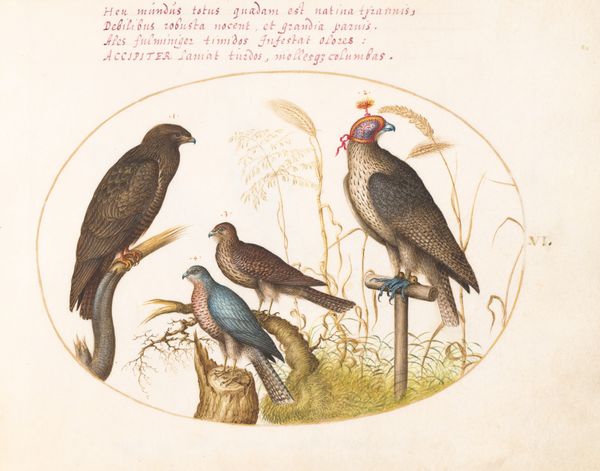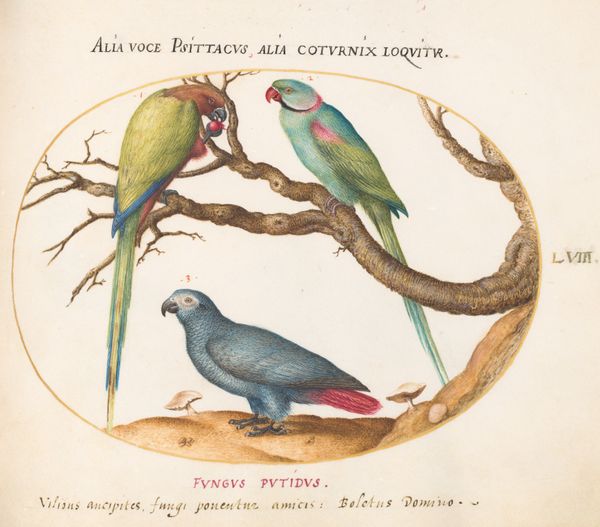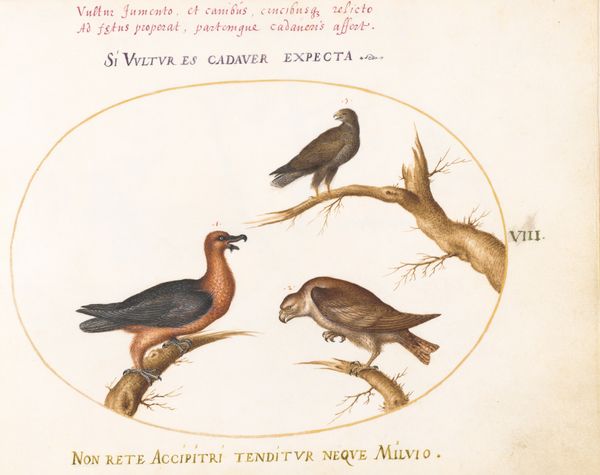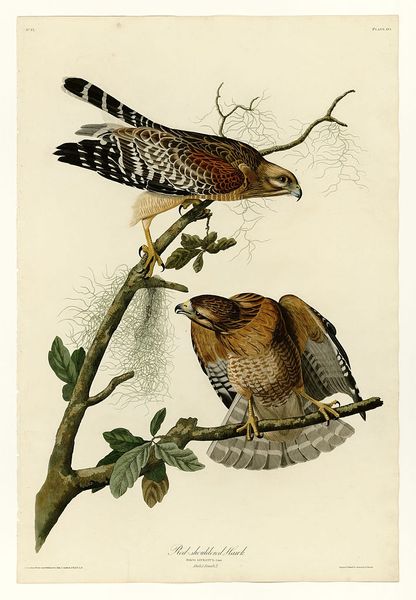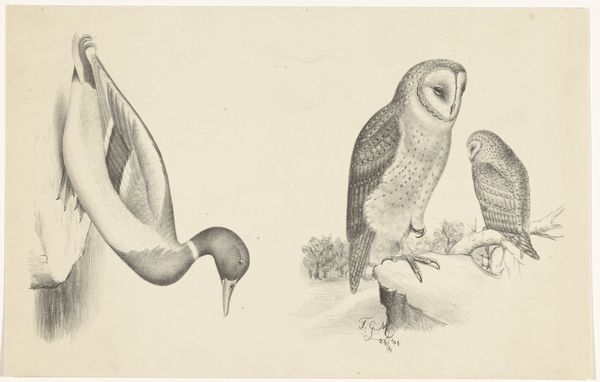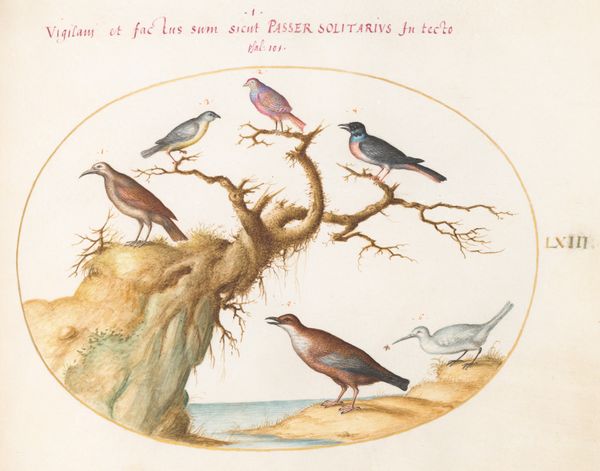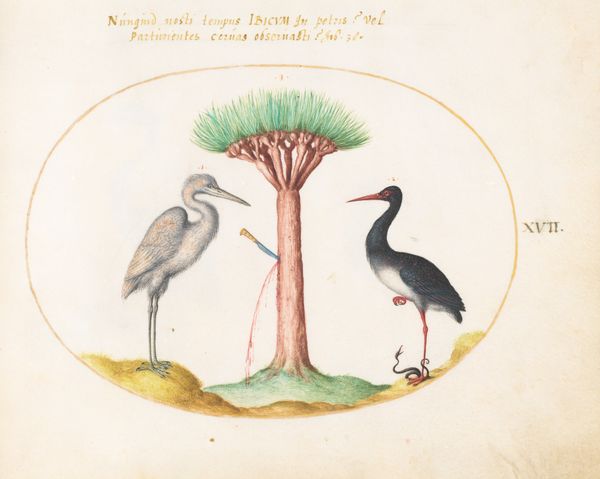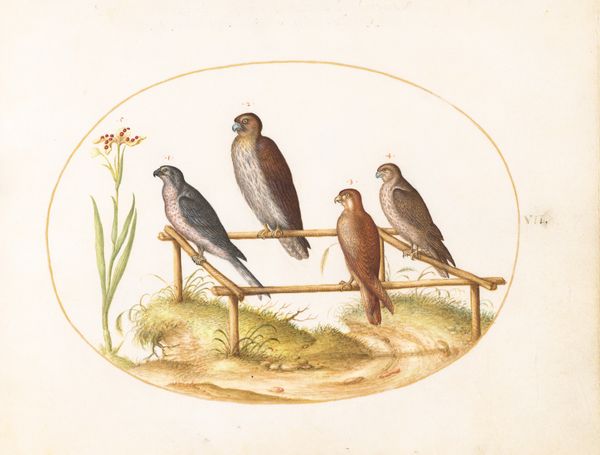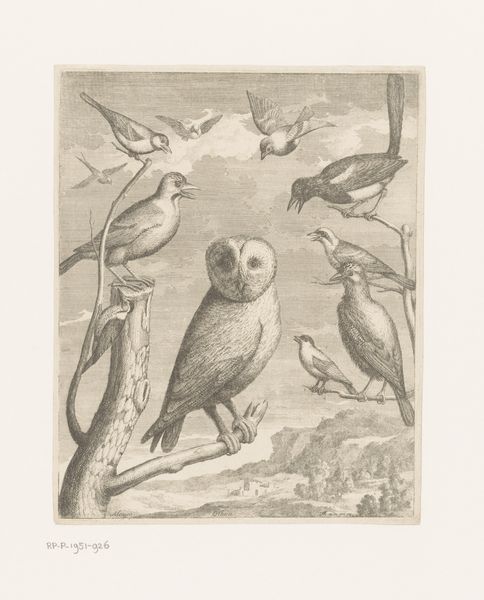
Plate 55: A Tawny Owl, an Eagle Owl, and Two other Owls c. 1575 - 1580
0:00
0:00
drawing, coloured-pencil
#
portrait
#
drawing
#
coloured-pencil
#
mannerism
#
figuration
#
coloured pencil
Dimensions: page size (approximate): 14.3 x 18.4 cm (5 5/8 x 7 1/4 in.)
Copyright: National Gallery of Art: CC0 1.0
Curator: I find the owl in flight arresting, it has this air of almost defiant watchfulness despite the delicate, seemingly hand-painted detail in the wings and feathers. Editor: That's interesting, because my first impression is that the whole composition has an uncanny quality, like looking at a page from an alchemist's bestiary. There's something slightly unsettling about their stares. Curator: Yes, I can see that. This coloured-pencil drawing, "Plate 55: A Tawny Owl, an Eagle Owl, and Two other Owls" was created by Joris Hoefnagel around 1575 to 1580. Hoefnagel, deeply invested in Mannerist sensibilities, used zoological studies to imbue nature with hidden meanings. Editor: Mannerism really lends itself to that sense of hidden symbolism. Thinking about these owls then, one has to consider their traditional association with wisdom but also with the occult. Who had access to this knowledge and these illustrations? Curator: It circulated among a small intellectual and aristocratic elite at the time, yes. The owls, as nocturnal creatures, certainly symbolize hidden knowledge, perhaps even secrets that were kept from the common person. The gaze is critical here—it almost feels accusatory. Editor: Exactly. These birds aren't just observed; they observe us. That knowing gaze reflects societal power dynamics of the period. Who has the right to see and know, and who is kept in the dark? The fact that it's a drawing also underscores how it can operate as both naturalistic observation and deliberate staging of a specific, constructed idea of knowledge and its gatekeepers. Curator: It also ties into a broader theme of "memento mori" popular at the time, a reflection on mortality. The owl, often associated with death or bad omens, served as a reminder of life's fragility. Hoefnagel was incredibly skilled at subtly conveying layered symbolism through careful depiction. Editor: Considering that in its time, the “hidden knowledge” Hoefnagel invokes might include political dissent, philosophical radicalism or suppressed heretical ideas, the choice of owls makes it all the more pointed. Curator: Yes. They’re more than meets the eye, perhaps sentinels. Editor: More than simply picturesque birds. They are symbolic witnesses to the era’s power imbalances and hidden currents of thought.
Comments
No comments
Be the first to comment and join the conversation on the ultimate creative platform.
